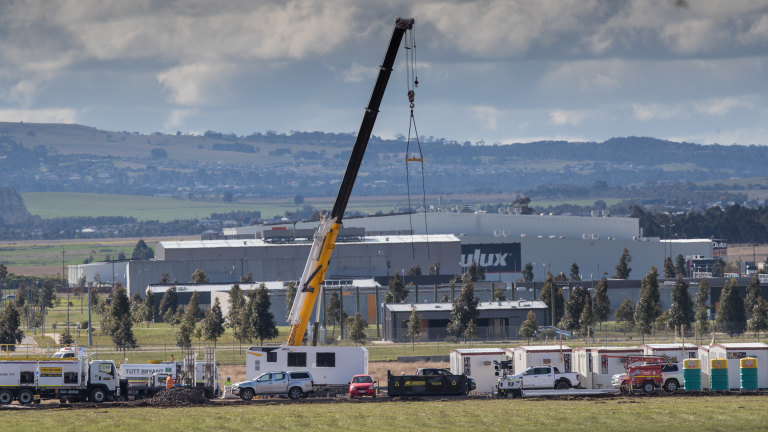United States President Barak Obama will touch down in Canberra tomorrow beneath a shield of fighter jets and surrounded by massive security to reaffirm America’s alliance with Australia.
While Obama’s visit will emphasise strong historic, cultural and economic ties – including progress on the new Trans-Pacific Partnership trade agreement – the key focus will remain on the two countries’ 60-year-old security alliance.
This is likely to include significant increases in the use of Australian bases by US combat forces, including the Marines, warships and strike aircraft.
Obama is expected to use the visit, his first to Australia as President, to reinforce his message that the US is strengthening its role in the Pacific, with Australia as a central element of the force posture review that will shape America’s response to dramatic shifts in global power balances.
Australian Defence Minister Stephen Smith said Canberra’s own defence posture review, which will form part of a new defence white paper in 2014, would “complement” joint discussions with Washington on America’s emerging strategic blueprint.
Presidential security units have already arrived in Canberra on board a C-17 Globemaster that landed on Sunday, including Obama’s heavily armoured Cadillac and a Marine Corps Blackhawk helicopter which has joined similar Australian units.
Up to 12 RAAF F/A-18 Hornet fighters will patrol the sky above Canberra and Darwin, where Obama and Prime Minister Julia Gillard are expected to announce new defence moves on Thursday.
The national capital will be heavily patrolled by screens of police, special forces and other army units, counter-terrorism squads and US Secret Service details.
Parliament House will be locked down during the President’s address to a joint sitting of the Senate and House of Representatives, with further saturation security as Obama lays a wreath at the war memorial and visits a Canberra school with Gillard.
Obama’s visit comes at a high tide of Australian support for the US alliance, despite the unpopularity of the war in Afghanistan and Green Party opposition to US use of defence facilities. The latest annual poll by the Lowy Institute found that support for the alliance has rebounded to more than 80 per cent since lows reached during President George W. Bush’s Administration.
The poll said 83 per cent of Australians also trusted America to act responsibly in the world, most would support basing US troops on the continent and a majority would back Australia following America into a full-scale war on the Korean peninsula.
Recent strategic papers by American analysts have also suggested that Australia’s relationship with the US could become one of Washington’s most important, rivalling Nato and the special ties to Britain.
This was reinforced after talks between Australian and US foreign and defence ministers in September, which outlined proposals to strengthen defence ties that American Defence Secretary Leon Panetta said would “make very clear to those that would threaten us that we’re going to stick together”.
Although the US does not base forces in Australia it maintains a significant presence through the electronic spy base at Pine Gap, the Harold E. Holt submarine communications station in Western Australia and extensive exercising and training.
This includes the big Talisman Sabre programme that this year involved 22,500 US and Australian troops, 18 warships and 25 aircraft, training for American strategic bombers and strike jets, and frequent visits by US warships.
Obama and Gillard are expected to announce further moves likely to include even greater use of Australian facilities, embracing expanded rotations of US Marines through the Northern Territory and more visits by American ships and aircraft.
Smith has already said that potential moves include greater US access to Australian training, exercise and test ranges, the positioning of American equipment in Australia, and “options for joint and combined activities in the region”.
Permanent US bases are not likely to be announced.
In a speech last week Smith said Australia was looking at the potential for expanding existing visits, training and exercising.
“This is what I colloquially or anecdotally describe as more ships in and out, more planes in and out, and more troops in and out on training and exercises, extending existing joint activities with the US in Australia. “For Australia, such initiatives could support our long-held strategic interests in maintaining and expanding US engagement in our region, and could provide tangible benefits to Australia through enhanced Defence Force training opportunities and improvements in interoperability with US forces.”
FLYING VISIT
US President Barack Obama will visit Australia between attending Apec in Hawaii and the East Asian summit in Bali.
Tomorrow
* Welcome.
*Talks with Prime Minister Julia Gillard. They will hold a joint news conference.
*Meeting with Opposition leader Tony Abbott.
*Parliamentary dinner.
Thursday
*Wreath-laying at the war memorial.
*Address a special sitting of Parliament.
*Visit to a Canberra primary school.
*US Embassy event.
*Visit to Darwin US memorial.
*Address Australian troops in Darwin.
By Greg Ansley | Email Greg
Related posts:
Views: 0
 RSS Feed
RSS Feed

















 November 14th, 2011
November 14th, 2011  FAKE NEWS for the Zionist agenda
FAKE NEWS for the Zionist agenda 

 Posted in
Posted in  Tags:
Tags: 
















